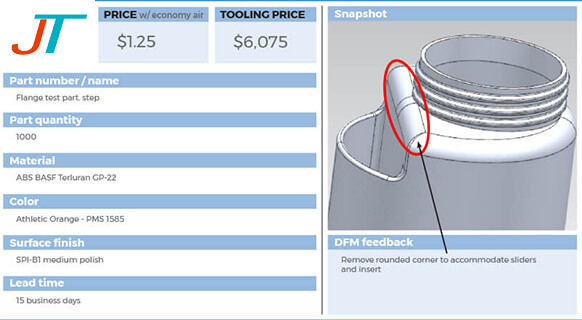Thermoplastic Injection Molding
Thermoplastic injection molding is an injection molding process that produces functional parts by injecting thermoplastic into a custom mold. It is commonly used for prototyping, long-run manufacturing, short-run manufacturing and more. The injection molding process is fast, accurate and is capable of producing high-quality parts with large amounts of detail. A wide variety of products, from consumer to engineering–grade, can be made. Jintai Mold has been a leader in producing quality thermoplastic parts for many years by applying the injection molding process.
The primary benefit of thermoplastic injection molding is that it is both cost–effective and fast. Injection molding reduces the possibility of undesired sharp edges and produces smooth, finished products that require no further finishing. Thermoplastic injection molding is straightforward, efficient and more reliable than many manufacturing methods. Some of the top advantages of the thermoplastic injection molding process include:
Advantages of Custom Injection Molding Thermoplastic
- Speed and efficiency: Once the custom injection mold has been made, thousands of parts can be made from one mold. Depending on the mold design’s complexity, an average time of 15 to 12 Hours passes between cycles.
- Part complexity: Injection molding is a good fit for complex parts that require uniformity. Since thousands of components can be produced from one mold, each piece is identical. The extremely high pressure used during the process allows a large amount of detail to be added to the part’s design.
- Waste reduction: Jintai Mold shares a commitment to quality, sustainability and optimal safety. Only the required amount of plastic is used to build each part. The excess plastic is recycled, which benefits the environment while minimizing waste.
- Low labor costs: The injection molding process is automated and controlled by a single operator or mold technician. This allows for a reduction of labor costs when compared to other manufacturing methods.
- Strength: While it is possible to use fillers in the injection molds, these fillers reduce the density of the plastic while being molded and help add to its finished strength after the molding process. The strength and durability of plastics has increased over the years. Modern lightweight thermoplastics can withstand even the most rugged environments.
- Versatility in materials and color: Choosing the right material and color for a project are two of the essential factors in creating plastic parts. One mold can produce many variations of your product. Color and material type are relatively easy to change in injection molding machines.
Cost of Plastic Injection Molding
Common Injection Molding Thermoplastics
Injection Mold Thermoplastic Materials
- ABS
- Acetal
- Acrylic
- Polyarylate
- CPVC
- Polyvinyl chloride (PVC)
- HDPE
- Polypropylene
- Nylon and Glass–filled Nylon
- Polyester (PBT, PET)
- Polycarbonate
- Polystyrene
- Polyetherimide (Ultem) Polyurethane
- Ultra High Molecular Weight Polyethylene (UHMWPE)







